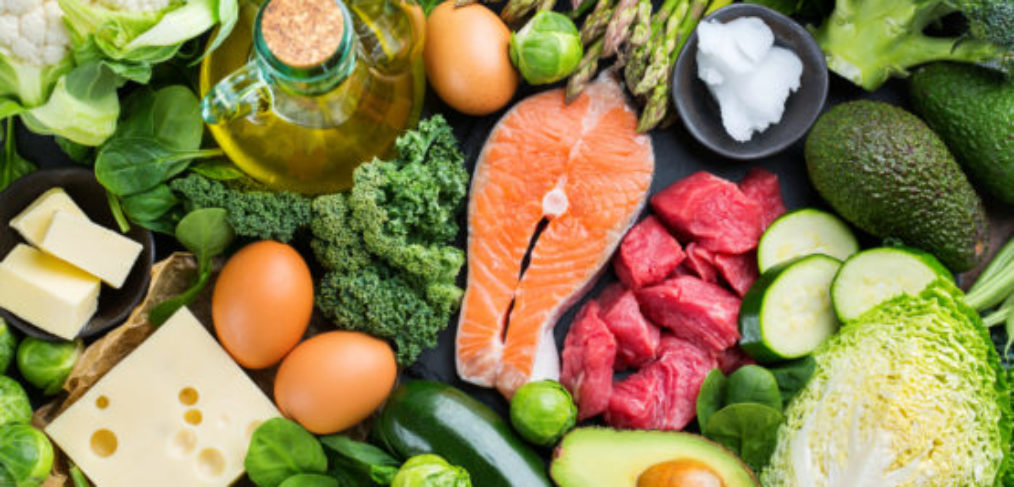Real Food, Healthy Gut, Optimal Health

“A diet full of highly processed foods with added sugars and salt promoted gut microbes linked to obesity, heart disease and diabetes” was the opening line in a recent piece in the New York Times (1).
Seems pretty straightforward, doesn’t it?
Then why is it that so many are still struggling with making the healthiest food choices and, as a result, putting themselves at a higher risk of becoming sick?
- CDC data shows 94% of people who died from COVID-19 in the U.S. had contributing health conditions (2).
- Many autoimmune conditions are becoming more common, with some increasing in incidence by as much as 9% each year (3).
- The U.S. adult obesity rate passed the 40 percent mark for the first time, standing at 42.4 percent (4).
And it’s not just diagnosed illnesses; many are surviving in a state of subclinical illness; getting by day by day, plagued with GI issues, fatigue, brain fog, rashes on the skin and pain.
To make matters worse, given the prevalence of all of the above, it’s now commonplace to use our peers as a check to see if what we’re experiencing is ‘normal’.
Poor sleep, sugar cravings, regularly occurring headaches and not regularly occurring bowel movements happen for so many on a frequent basis, that when we finally (and often shyly, due to embarrassment) confide in a friend about our symptoms and learn that they, too, are experiencing the same things, a decision is often made that this state of existence is both normal and uncontrollable.
A visit, or series of visits to doctors may follow, but unless functional medicine is involved at some point, the chances of digging into what one’s diet is and how it’s affecting overall health is unlikely to be broached.
Here’s where the good news begins:
We can, and should, begin to take matters into our own hands and start with one thing we do have complete control over: what we are putting in our mouths.
And what should that be, exactly?
Given that you’re reading this post on a PALEO blog which has been around since 2007, chances are that you’re not going to be surprised to read a recommendation that an authentic Paleo approach is an outstanding choice for a foundation of eating real food, thus decreasing the chance that inflammation in the body will occur or, if it’s already there, worsen.
And what’s even more exciting, researchers found that what people ate had a more powerful impact on the makeup of their microbiomes than their genes. They also discovered that a variety of plant and animal foods were linked to a more favorable microbiome (5).
READ: there is no longer a reason to assume that because your mom had heart disease or paternal grandfather had Type I diabetes that you’re doomed to get it, too.
“This research shows for the first time is the link between the quality of the food we’re eating, the quality of our microbiomes and ultimately our health outcomes.”
So what do we eat?
A Paleo diet, yes… but taken with a grain of salt.
In other words, implement a Paleo diet, but a real one.
One which is made of abundant, in season produce (mostly leafy greens), ample natural fats, from both plants and mindfully sourced animals) and small portions of properly sourced proteins.
Not items in packages with labels that state they are Paleo.
And doing so not because you’re ‘going Paleo’ but because you’re choosing to treat your body to an anti inflammatory manner of eating because you care about your health. And being the best you that you can be for your family. And because you’re choosing to do everything in your control to thrive and not just survive.
I see many times in my nutrition practice that clients who’ve had a wake up call of some description either themselves, or in a loved one and it takes that to truly take inventory of what their state of health is and what the options are.
Will you choose health?
Is there really another option?
Not one that’s truly worth it.
Here’s the icing on the proverbial cake: once you get into flow with a new, healthier way of eating (which, by the way, is likely to be quite similar to how your grandparents ate), and find symptoms decreasing and disappearing, all because you took the time to dissect what you feed yourself and learn what suits you and what does not, it becomes second nature and increasingly easier and easier.
Ultimately, you’re eating what you want because everything you’re eating is nourishing and healing you.
And while there are many reasons why people may eat that have nothing to do with being hungry, which also need to be addressed with just as much loving attention, getting on top of the physiology of what you’re eating an how it’s affecting you is something you can do… now.. independently.
This shift in approach is far more empowering as compared to being given a list of foods to avoid ‘because they’re not Paleo’.
It’s not until we each put this to the test and become guinea pigs in our own experiment.
We’re each the only one who knows how we feel and by diving into which foods make us feel focused, fit and fabulous and which do not, we’re already more than halfway there.
Is there really any other choice?
(1) https://www.nytimes.com/2021/01/11/well/eat/diet-gut-microbiome.html
(2) https://www.cdc.gov/nchs/nvss/vsrr/covid_weekly/index.htm?fbclid=IwAR3-wrg3tTKK5-9tOHPGAHWFVO3DfslkJ0KsDEPQpWmPbKtp6EsoVV2Qs1Q
(3) https://www.nih.gov/news-events/news-releases/autoimmunity-may-be-rising-united-states
(4) https://www.cdc.gov/nchs/fastats/obesity-overweight.htm
(5) https://www.nature.com/articles/s41591-020-01183-8




